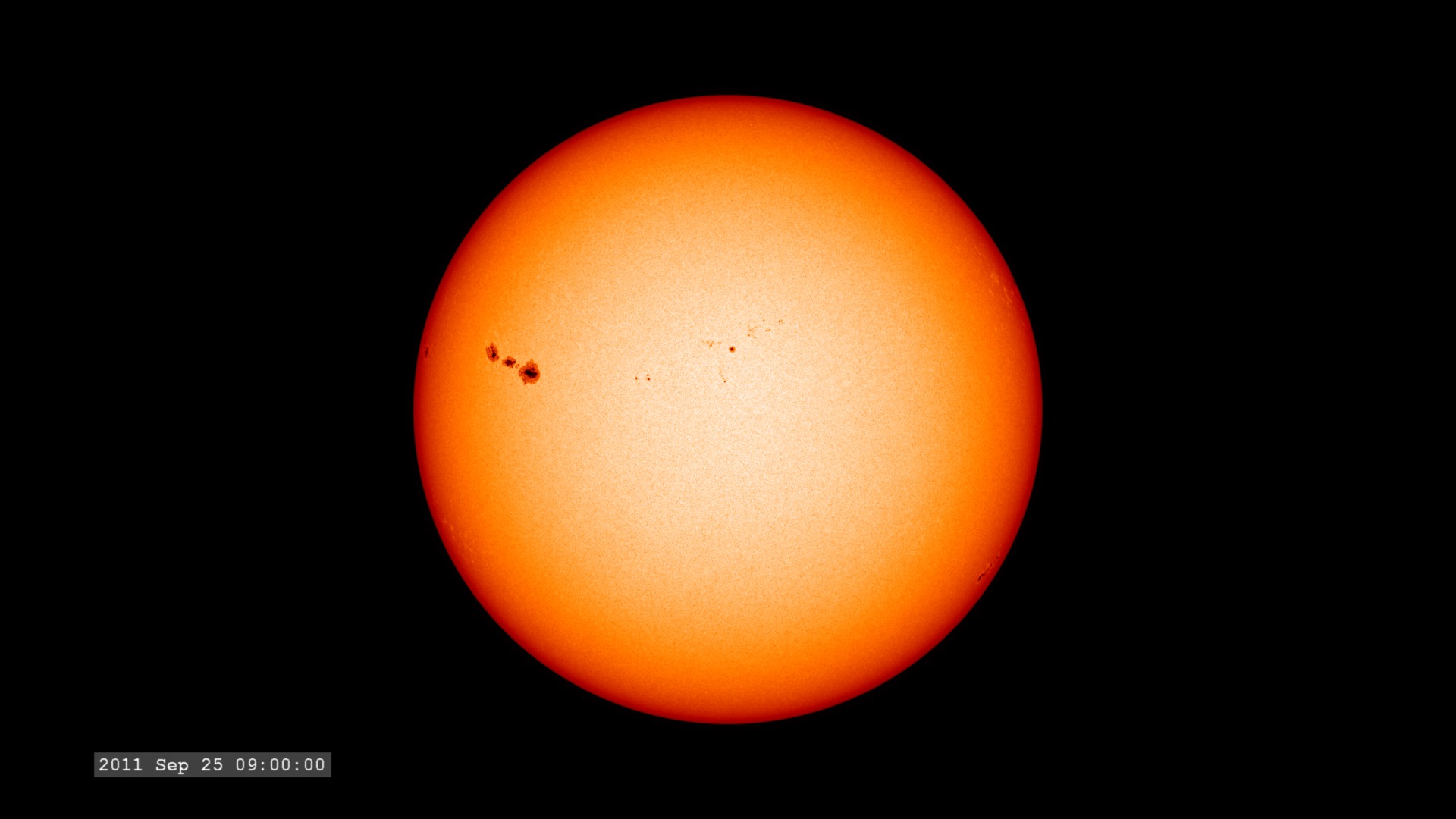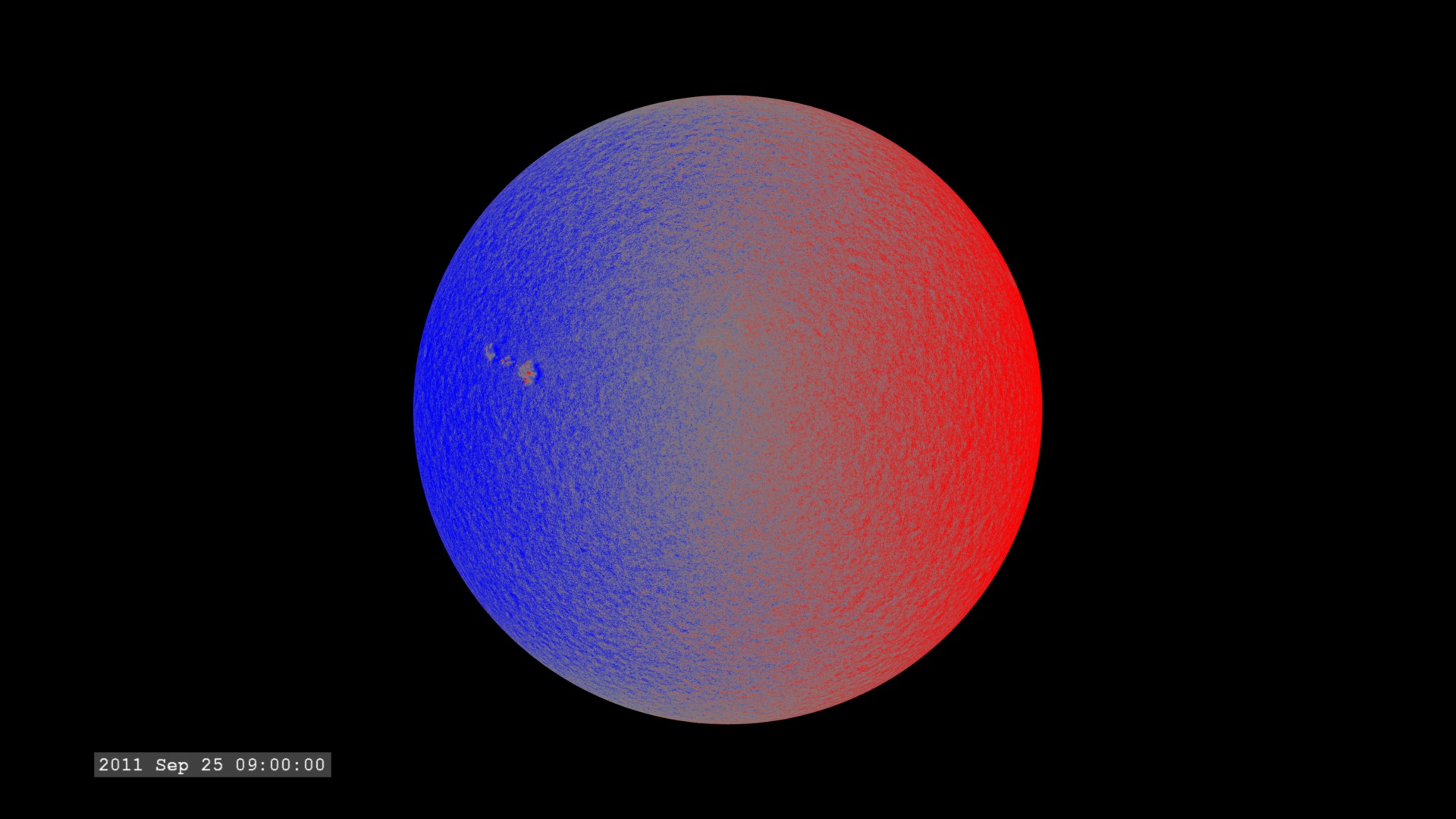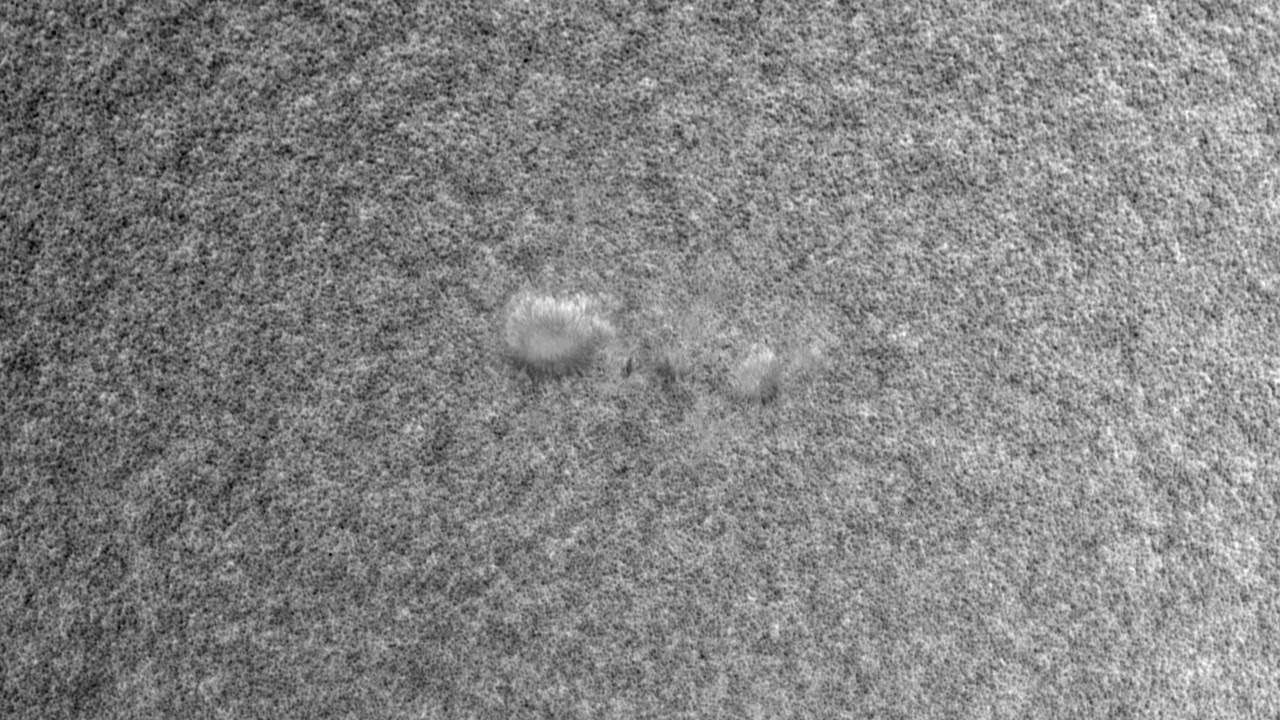Solar Vibrations

Images from space reveal the chaotic motions on the surface of the sun.
Material inside the sun is constantly on the move. This movement can produce pressure waves that travel through the sun and cause its surface to vibrate. Solar physicists have given a name to the study of these motions that were first observed in the 1970s—helioseismology. Just as seismic waves can be used to visualize Earth’s interior, scientists can use pressure waves to infer information about the sun’s inner structure. Since 2010, the Helioseismic and Magnetic Imager (HMI) instrument aboard NASA’s Solar Dynamics Observatory (SDO) spacecraft has observed oscillating solar material on the sun's surface layer, the photosphere. Thanks to the instrument, scientists have been able to hone their models of how material circulates within the sun, helping them explore how regions of active magnetism ramp up and erupt as solar flares and coronal mass ejections. Watch the video to see a time-lapse of SDO images that shows shifting material on the sun’s surface.
This video created from SDO images shows solar material rising (black) and sinking (white) on the sun's surface.

SDO image of the sun’s surface layer, the photosphere.

Dark and light areas seen in this HMI image represent vibrations on the sun’s surface produced by pressure waves.

Close-up of oscillating solar material on the sun's surface. A group of sunspots are visible at center.
Credits
Please give credit for this item to:
NASA's Goddard Space Flight Center
Video and images courtesy of NASA/SDO
-
Writer
- Kerry Klein (USRA)
-
Animator
- Tom Bridgman (Global Science and Technology, Inc.)
-
Producer
- Scott Wiessinger (USRA)
-
Scientists
- William D. Pesnell (NASA/GSFC)
- Philip Scherrer (Stanford University)
Release date
This page was originally published on Tuesday, May 5, 2015.
This page was last updated on Wednesday, May 3, 2023 at 1:49 PM EDT.


